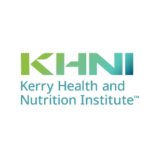‘Is there any difference between the iodine statuses of breast-fed and formula-fed infants and their mothers in an area with iodine sufficiency?’ This was the question researchers attempted to answer in a study published in the British Journal of Nutrition.
What they found was that breastfed infants, formula-fed infants, and even the mothers all had adequate iodine levels, which is good news for all mothers and children from iodine sufficient geographies.

Iodine is a mineral that is essential for cognitive development of infants and children, but it is also important for growth and development in adolescents and adults due to its importance in synthesis of thyroid hormones. Adding iodine to table salt in the United States significantly reduced the prevalence of iodine deficiency, but dietary guidance focused on reducing salt intake has raised concern that iodine intakes may fall below recommended levels again.
Want to know more about nutrition for infants and mothers? Read our blog Setting the Course for Lifelong Health: Nutrition for Mother and Baby
Geography can also impact whether or not we consume enough iodine, especially for geographies where there is no iodine supplementation program (like salt in the US) in place. Iodine is taken up from the soil by crops, but some geographies do not have much iodine in the soil. This means that people in those areas may be more likely to have low iodine intakes.
For areas with sufficient iodine, though, the study shows promising results:
- Whether they are breastfed or formula-fed, infants will receive enough iodine in iodine sufficient geographies
- Postpartum mothers seem to have adequate iodine status in iodine sufficient geographies
Want to know more about iodine for specific countries? Head to this page from the World Health Organization.

 We bring the voice of science to some of the most challenging questions facing the food and beverage industry day to day through our network of over 1000 Kerry scientists, external collaborators, and our Scientific Advisory Council. Our content comes straight from scientists and experts in nutrition, taste, food, and sensory sciences to make sure we are providing up-to-date, credible information to guide people shaping the future of food.
We bring the voice of science to some of the most challenging questions facing the food and beverage industry day to day through our network of over 1000 Kerry scientists, external collaborators, and our Scientific Advisory Council. Our content comes straight from scientists and experts in nutrition, taste, food, and sensory sciences to make sure we are providing up-to-date, credible information to guide people shaping the future of food. 

